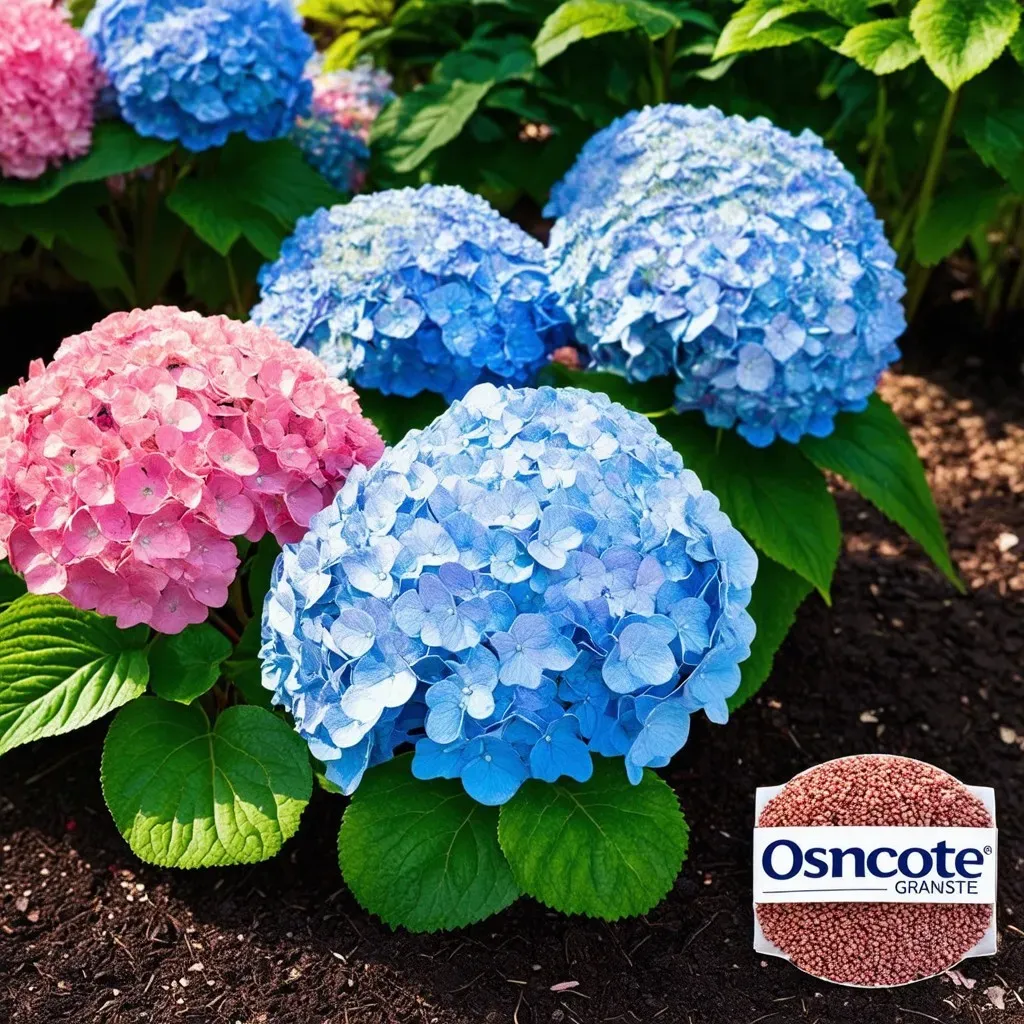Osmocote can be good for hydrangeas, especially for gardeners who prefer its ease of use and long-lasting nutrient release. However, it is equally important to consider the specific needs of hydrangeas, including soil pH and the benefits of organic matter.
Understanding Osmocote and Its Benefits for Hydrangeas
Osmocote is a popular slow-release fertilizer that is specially formulated to provide essential nutrients over an extended period. The unique encapsulation of nutrients allows Osmocote to release them gradually, providing consistent nourishment for plants, including hydrangeas. Here are some primary benefits of using Osmocote for hydrangeas:
-
Ease of Use:
- Pre-measured granules eliminate the guesswork of how much fertilizer to use.
- No need for frequent applications; typically, one application lasts for several months.
-
Long-lasting Nutrients:
- Nutrients are released in small quantities over time, preventing nutrient burn that can occur with fast-release fertilizers.
- This feature makes it suitable for hydrangeas that prefer a steady nutrient supply.
-
Versatile Application:
- Can be used for both indoor and outdoor hydrangeas, making it highly versatile for gardeners.
Nutritional Composition of Osmocote
Osmocote fertilizers come in various formulations, generally indicated by a series of three numbers representing the N-P-K ratio (Nitrogen-Phosphorus-Potassium). Here is a general table of the N-P-K ratios you might find in Osmocote products suitable for hydrangeas:
| Fertilizer Type | N-P-K Ratio | Release Time |
|---|---|---|
| Osmocote Flower & Vegetable Food | 15-9-12 | Up to 4 months |
| Osmocote Smart-Release Plant Food | 8-8-8 | Up to 6 months |
| Osmocote Plus Various Formulations | Varies | Varies |
The choice of the correct N-P-K ratio is crucial for optimal blooming and healthy growth. Hydrangeas require adequate nitrogen for leafy growth, phosphorus for blooming, and potassium for overall plant health.

Optimizing Soil Conditions for Hydrangeas
While Osmocote can be beneficial, understanding the soil conditions is vital for the best results. Hydrangeas thrive in specific pH levels, generally between 5.5 and 6.5 for hydrangea-colors-blooms/unlock-the-secret-to-stunning-blue-hydrangeas-a-comprehensive-guide/">blue hydrangeas, which prefer more acidic conditions. Here’s how to create an ideal environment:
How to Test Soil pH
- Buy a Soil pH Test Kit: Available at garden centers or online.
- Sample from Different Areas: Take samples from a few inches below the surface in various spots around the hydrangeas.
- Follow Instructions: Mix soil with the solution provided in the kit and wait for results.
Adjusting pH If Necessary
| Adjustment Method | Expected pH Change | Application Frequency |
|---|---|---|
| Lime (add to soil) | Increases pH | Every few years |
| Sulfur (add to soil) | Decreases pH | Once each growing season |
Maintaining the correct pH enhances nutrient availability, further benefiting the growth of hydrangeas when used in conjunction with Osmocote.
Osmocote Application Techniques for Hydrangeas
Applying Osmocote effectively is key to reaping its benefits. Here are some techniques:
When to Apply
- Spring: After the last frost is an ideal time for a major application. This timing allows nutrients to be available when the plants begin their blooming cycle.
- Mid-Summer: AnOther application can help support continued vigorous growth and flowering.
How to Apply
- Measure the Right Amount: Follow the package instructions based on the size of the hydrangea.
- Distribute Evenly: Sprinkle granules evenly around the plant, avoiding the immediate root zone to prevent burning.
- Incorporate into Soil: Lightly rake to incorporate into the soil, allowing for quicker nutrient absorption.
Comparing Osmocote with Organic Fertilizers
While Osmocote offers numerous advantages, some gardeners prefer organic methods. Here’s a comparison between Osmocote and organic fertilizers:
| Factor | Osmocote | Organic Fertilizers |
|---|---|---|
| Nutrient Release | Slow-release | Often quick-release, depends on type |
| Soil Health Benefits | Moderate | High, improves soil structure |
| Cost | Generally affordable | Varies, can be more expensive |
| Ease of Use | Very easy to apply | Can vary by product and application |
| Environmental Impact | Synthetic elements | Natural, often biodegradable |
Popular Organic Alternatives
- Compost: Enhances soil health and provides nutrients.
- Fish Emulsion: Excellent for leafy growth and sustainable.
- Bone Meal: Great for phosphorus, encouraging blooming.
FAQs About Using Osmocote for Hydrangeas
Q1: How often should I apply Osmocote to my hydrangeas?
A: Osmocote can typically be applied every 4 to 6 months depending on the specific product used.
Q2: Can I mix Osmocote with other fertilizers?
A: It is possible, but be cautious of nutrient overload. Stick to one primary fertilizer and supplementary organic options.
Q3: What symptoms indicate my hydrangeas need fertilization?
A: Look for poor bloom production, pale leaves, or stunted growth, which may signal nutrient deficiency.
Q4: Is Osmocote safe for potted hydrangeas?
A: Yes, Osmocote is suitable for both potted and outdoor hydrangeas, providing a controlled nutrient release.
Q5: Can I use Osmocote if I’m growing hydrangeas organically?
A: Yes, though it is not organic, many gardeners use Osmocote alongside organic methods for improved performance.

Final Thoughts
In conclusion, when determining if Osmocote is good for hydrangeas, the answer largely depends on your gardening style and preferences. Its slow-release formulation offers ease and efficiency, making it an excellent choice for hydrangeas, particularly when matched with the right soil conditions and care strategies.
For further detailed information on Hydrangea Care, refer to Epic Gardening.


